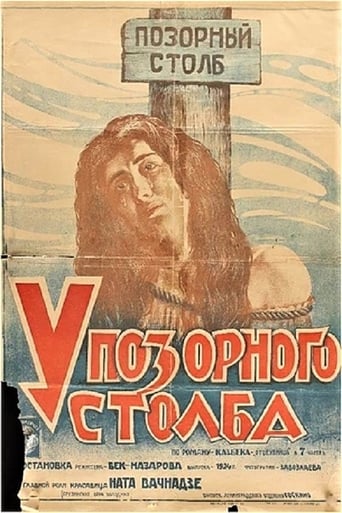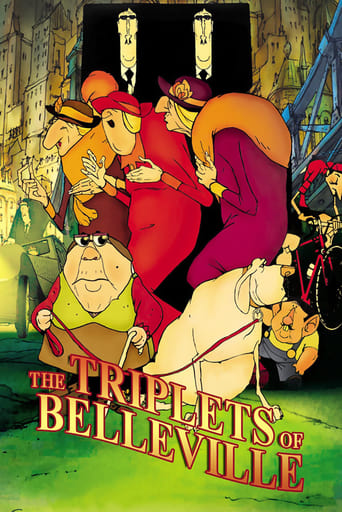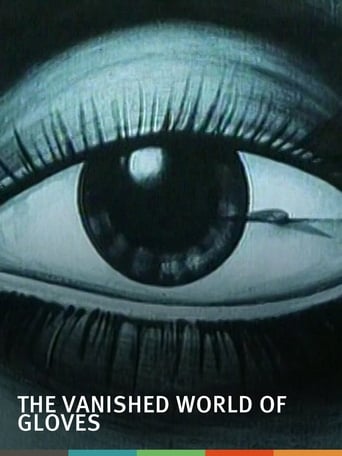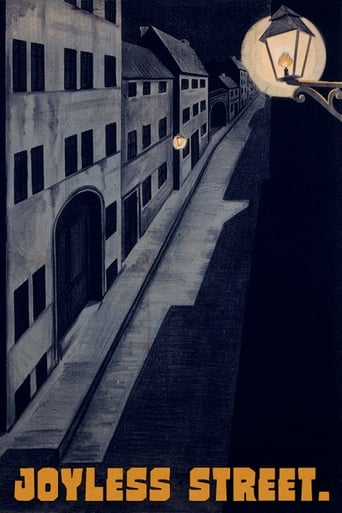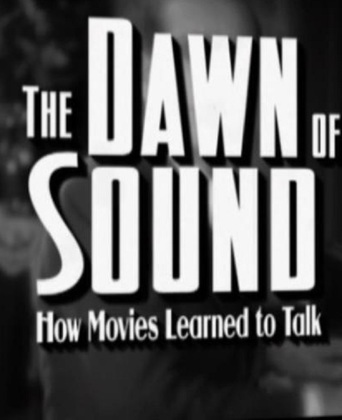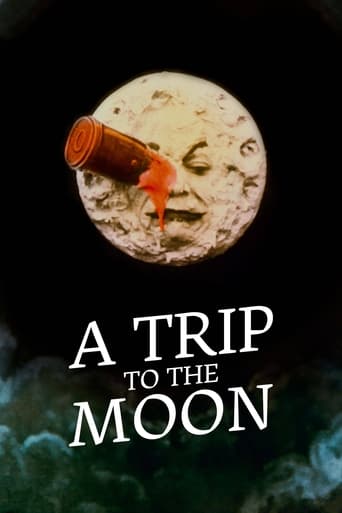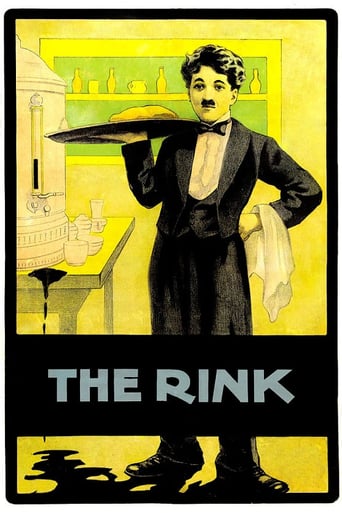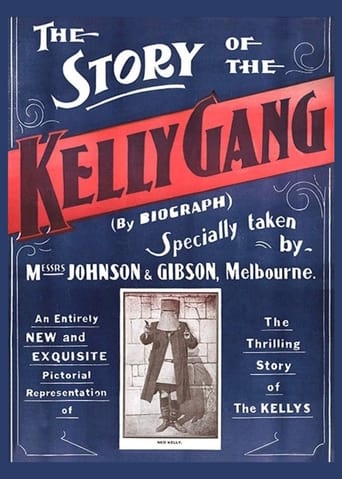

The Story of the Kelly Gang (1906)
Just as Galeen and Wegener's Der Golem (1915) can be seen as a testament to early German film artistry, The Story of the Kelly Gang (1906) symbolizes both the birth of the Australian film industry and the emergence of an Australian cinema identity. Even more significantly, it heralds the emergence of the feature film format. However, only fragments of the original production of more than one hour are known to exist, preserved at the National Film and Sound Archive, Canberra; Efforts at reconstruction have made the film available to modern audiences.
Watch Trailer
Cast


Similar titles
Reviews
Admirable film.
This story has more twists and turns than a second-rate soap opera.
It is a whirlwind of delight --- attractive actors, stunning couture, spectacular sets and outrageous parties.
Watching it is like watching the spectacle of a class clown at their best: you laugh at their jokes, instigate their defiance, and "ooooh" when they get in trouble.
I cannot actually review this movie, as I have not seen the 17 surviving minutes of film yet. However, THE STORY OF THE KELLY GANG has made official movie history as being considered the first feature film. Personally I feel that some of George Melies films, such as his classic A TRIP TO THE MOON, while short by our standards have a fully developed story line and special effects and even sex (note the chorus line of rather plump young ladies loading the Columbiad with the moon projectile) to merit the title "feature", but that is my own opinion. Apparently this film was an hour long, so it was a feature film. The comments on the thread are based on two points - that the film is the first multiple reel movie ever played, and that the subject is the noted Australian bush-ranger Ned Kelly. Kelly's position in Australia is roughly that of Robin Hood in England and Jessie James in the southern and lower western states. Supposedly the three men (if Robin, Earl of Locksley was a real person - the jury is still out on that) robbed the rich and powerful oppressors (English landlords and bankers, Northern carpetbaggers, railway owners, and bankers), and Norman land barons and their supporters) to protect their own (Irish laborers and convicts, Southern unreconstructed Confederates, and Anglo Saxon serfs and their former masters - as well as good King Richard I "Lionhearted" trying to rebuild the nation). The truth is less pretty. Kelly may have been pushed by economic circumstances into a life of crime, but does that excuse his murdering three police constables he found asleep in the woods? His supporters point to actions done to his sister. But those were done by another police constable! James continued his personal war against the North, and while one is uncomfortable by the lengths the Grant Administration took against him (like blowing up his mother's farm, crippling her and killing his young half-brother), does that excuse James' attack on the town of Northfield, Minnesota? As for Robin, one senses the story is an ancient urban legend - Richard I had little real interest in his kingdom except to support his heroic quests in the third Crusade - ironically his greedy and vulturous brother John actually may have had more real concern about the state of the kingdom of England than Richard ever did (although for the wrong reasons). It has been suggested that Kelly had a secret plan (in his last operation) to start something really big - a rebellion to free the colony of Victoria from British control and create an Irish controlled nation. The attack on the hotel at Glenrowan, with it's grabbing of hostages, was part of a plan to derail a troop train, and this was to be the signal to start the rebellion. If such it did not work - the train was not derailed, and the troops were to make an end of the gang. Still the size of the attack and the fact that Ned and his lead gang members wore metal armor to protect them imprinted the last stand at Glenrowan into Australian historic memory, the burning hotel in the background a veritable gotterdammerung for the age of the bush-rangers. It was more prosaic but somewhat cleaner for Jessie in the end. Ned had to face his trial and execution. Jessie being shot in the back by Bob Ford in the parlor of his house - that sort of alleviated some of his crimes to the public, and made Ford look lower than scum.Ironically both ends of Kelly and James were within six months of each other. Like a joint end of an era...which it really wasn't. They probably never even heard of each other.Kelly remains a troubling figure in Australian memory. Murderer and criminal or freedom fighter. Maybe Robert Hughes can explain it better than I can. One Australian artist, Sidney Nolan, treats Ned as an icon - turning his helmeted head into a constant figure in his paintings (in one resembling an Australian sphinx). Yet it does not translate well outside Australia - back in the 1980s there was an exhibition of Nolan paintings at the Metropolitan Museum of Art in New York, and a critic of the exhibition thought Nolan was turning Kelly's head into a television screen as a symbol of modern celebrity. I was one of several people who corrected that error. Facing an establishment English born judge at his trial in October 1880, Ned did not crack. Hearing the death verdict he said "Such is life". He also told the judge he'd see him soon. A month after Ned's hanging the judge died suddenly. An interesting life - maybe he did deserve to have the first feature movie made about himself.
'The Story of the Kelly Gang' is undoubtedly one of the cinema's most significant achievements, and certainly the most revolutionary title ever to have come out of the Australian film industry. However, it startles me to discover just how obscure the film has now become; indeed, much of our country's cinematic output has long vanished from public knowledge, an unfortunate consequence of our ever-growing reliance on Hollywood. In my efforts to rediscover many of Australia's forgotten classics, I'd decided that I might as well start from the beginning: released on 26 December 1906, 'The Story of the Kelly Gang' told the thrilling story of Victorian bushranger Ned Kelly and his comrades, and is more than likely the first feature-length film ever produced. Though only fragments of the film now remain, the National Film and Sound Archive (NFSA) have done a remarkable job of compiling and digitally restoring the surviving scenes, with the DVD released earlier this year. Also included is a fantastic 200-page booklet "The Story of the Kelly Gang: 'The Picture That Will Live Forever'" written by Ina Bertrand and William D. Routt, which includes in-depth analysis, historical information, original advertisements and reviews. It would be foolish to allow such a brilliant resource to go to waste, so much of the information in this review has been derived from the booklet.There are very few Australians who haven't heard the story of Ned Kelly (1855-1880). Kelly and his gang bushrangers were at one point the most wanted men in the country, becoming national legends in the process. At dawn on Monday 27 June 1880, after a courageous stand-off at the Glenrowan Inn, Kelly emerged wearing his home-made plate metal armour and helmet, still firing at police, before being shot down and arrested. He was executed for his crimes 11 November 1880, his final words reportedly: "such is life." Throughout the silent era, the subject of bushrangers became of staple of Australia cinema; it presented many of the same components as the American western, which had first come to light in 1903 with Edwin S. Porter's 'The Great Train Robbery.' Not only was 'The Story of the Kelly Gang' one of the first bushranger pictures, but it was also the world's first feature film. There has been some debate, of course, over the definition of a "feature," and, though some recorded boxing matches ran for longer, they did not possess a standard narrative. With much of the film lost in time, the original running length of the film is now uncertain, with some suggesting forty minutes and others more than an hour. Several commentators have claimed that the filmmakers deliberately stretched the truth in their advertisements to entice larger audiences (indeed, the film travelled the world for more than twenty years and achieved phenomenal commercial success).Until recently, it was believed that only ten minutes of the story had survived. However, in 2006, an additional seven minutes was discovered in the British National Film and Television Archive, and thanks to the efforts of the NFSA and the Haghefilm preservation laboratories in Amsterdam everything has been meticulously restored for our viewing pleasure. On the newly-released DVD, there are two versions of the film: the first is the seventeen-minute "restored version," which basically presents the story as it now survives, with a pleasant piano accompaniment by Mauro Colombis (and an experimental soundtrack by Endorphin that I wasn't game enough to try). The second is a "study version," which combines the remaining footage, new and original intertitles, advertising materials, posters and the original programme booklet in an attempt to reconstruct the complete narrative of the 1906 film. This one, running for about half an hour, certainly lends the film a more complete structure, allowing you to appreciate the gravity of the filmmakers' achievement.'The Story of the Kelly Gang' was written and directed by Charles Tait, with many members of his family playing key roles in the story. Though various sources have suggested different names, film historians have generally agreed that the following casting decisions are likely: Ned Kelly (Frank Mills), Dan Kelly (Sam Crew, John Forde, Mr. Marshall), Steve Hart (Jack Ennis, Mr. McKenzie, Norman Campbell) and Joe Byrne (Will Coyne). It is also probable that, at least in some scenes, the role of Kate Kelly is being played by a man in drag. The film, due to the perceived glorification of criminals, caused much controversy upon release, and it was banned in Benalla and Wangaratta in 1907 and again in Victoria in 1912. The film-making technique is a product of its times, completely devoid of close-ups, and the camera, despite a few primitive panning movements, almost always remains static. However, the convincing use of props and costumes, and the somewhat laid-back demeanour of the actors, lends the film a certain authenticity. Despite the excellent restoration work, many of the remaining scenes have unfortunately decayed beyond repair, and, particularly during Ned Kelly's climactic stand-off, the image has a tendency to strangely distort. Nevertheless, the historical importance of 'The Story of the Kelly Gang' is enough to overlook these technical imperfections, and I relished the opportunity to enjoy a true landmark of Australian cinema.
This afternoon at the Barbican, I attended the UK premiere of the digitally restored 'The Story of the Kelly Gang', with excellent piano accompaniment by John Sweeney, as part of the opening day's programme for the Silent Film & Live Music Series running through June. It's also part of the London Australian Film Festival, likewise at the Barbican ... so, I actually ended up attending two film festivals simultaneously! The restored film is a double-bill with 'The Life Story of John Lee: The Man They Could Not Hang'.'The Story of the Kelly Gang' is generally believed to be (and most likely WAS) the first feature-length movie ever made, produced in 1906. Sadly, the past tense is appropriate here, as the film is now not known to survive except in fragments ... and some of those do indeed appear to be out-takes, as a previous IMDb'er has noted. Actually, I've also seen (in Australia) another reel of this film: not a projection of the movie's image onto a screen, but rather I've seen (and touched) a mouldering reel of nitrate footage from the movie itself, now deteriorated beyond hope of restoration.As a part-time Australian (born in Scotland, expatriated Down Under as a 'child migrant'), I ought to feel proud that Australia produced the first feature movie. However, quite enough films pre-dating 1906 survive (from various nations) to make it clear that a substantial amount of film technique -- the close-up, the dissolve, the cross-cut -- had already evolved before this movie was made. Watching this restoration at the Barbican, it occurred to me that credit for the single biggest innovation in 'The Story of the Kelly Gang' belongs not to the photographer, director, editor or scenarist, but rather to that most unsung of film figures ... old Smokey, the projectionist. Prior to 'The Story of the Kelly Gang', films were so short that it was possible to store two or more separate movies on one projection reel. And, each reel being a separate story, the breaks between reels were natural breaks in the narrative. Many early cinemas had only one projector, with live entertainment provided during the longeur while the previous reel was rewound before the next reel could be shown. However, when 'The Story of the Kelly Gang' was exhibited in its original form in Australia (and later in other countries), the projectionist had to maintain two sets of apparatus at the same go, so as to achieve a seamless transition between reels. I wonder how soon film editors began using a reel marker (traditionally in the frame's upper right-hand corner) to indicate that a reel was about to end.Despite being largely missing in action, the original 'Story of the Kelly Gang' is of incalculable historic importance. As for the digital version which I enjoyed today, accompanied by Mr Sweeney's impressive performance on the keyboard, I'll rate it a full 10 out of 10. Bonzer, cobbers!
THE STORY OF THE KELLY GANG is believed to be the world's first feature length film. Running at between 65 and 70 minutes, it was billed at the time as the longest film ever made. It toured Australia for nine years and was an enormous success.Today only fragments survive, and it is hard to judge the film's artistic merits. About nine minutes of footage exists - some found on a garbage dump in Melbourne. Some of this footage may be out-takes. The footage is held by ScreenSound Australia, the National Screen and Sound Archive, in Canberra.The sequences show some enthusiastic acting, although the camera-work is static (like most films of the period). The most remarkable shot is probably when a priest, carrying a wounded man over his shoulder, walks toward and just past the camera, creating a strong sense of drama and movement. The final shoot-out scene is also well filmed - with Ned Kelly moving, and shooting, toward the camera, as troopers flee to the sides.A remarkable film, of great historical importance, that all film students should see. Up until World War 1, when initially neutral America began to dominate the world of film distribution, Australia had one of the most thriving and innovative film industries in the world.


